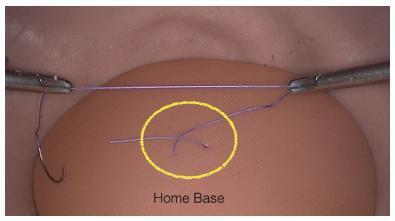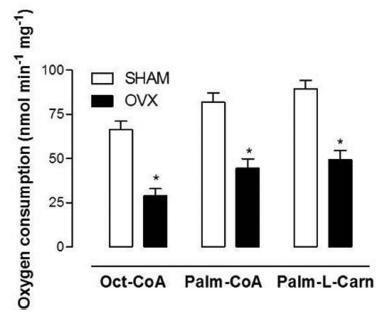Summary
Revista Brasileira de Ginecologia e Obstetrícia. 2018;40(6):309-312
To study the structure ofmaternalmortality caused by abortion in the Tula region.
The medical records of deceased pregnant women, childbirth, and postpartum from January 01, 2001, to December 31, 2015, were analyzed.
Overall, 204,095 abortion cases were recorded in the Tula region for over 15 years. The frequency of abortion was reduced 4-fold, with 18,200 in 2001 to 4,538 in 2015. The rate of abortions per 1,000 women (age 15-44 years) for 15 years decreased by 40.5%, that is, from 46.53 (2001) to 18.84 (2015), and that of abortions per 100 live births and stillbirths was 29.5%, that is, from 161.7 (2001) to 41.5 (2015). Five women died from abortion complications that began outside of the hospital, which accounted for 0.01% of the total number. In the structure of causes of maternal mortality for 15 years, abortion represented 14.3% of the cases. Lethality mainly occurred in the period from 2001 to 2005 (4 cases). Among thematernal deaths, many women died in rural areas after pregnancy termination at 18 to 20 weeks of gestation (n = 4). In addition, three women died from sepsis and two from bleeding.
The introduction of modern, effective technologies of family planning has reduced maternal mortality due to abortion.
Summary
Revista Brasileira de Ginecologia e Obstetrícia. 2018;40(5):266-274
To assesswhether themonomanual or bimanual training of laparoscopic suture followingthe sametechniquemay interferewith theknots’ performancetimeand/or quality.
A prospective observational study involving 41 resident students of gynecology/ obstetrics and general surgery who attended a laparoscopic suture training for 2 days. The participants were divided into two groups. Group A performed the training using exclusively their dominant hand, and group B performed the training using both hands to tie the intracorporeal knot. All participants followed the same technique, called Romeo Gladiator Rule. At the end of the course, the participants were asked to perform three exercises to assess the time it took them to tie the knots, as well as the quality of the knots.
A comparative analysis of the groups showed that there was no statistically significant difference (p = 0.334) between them regarding the length of time to tie one knot. However, when the time to tie 10 consecutive knots was compared, group A was faster than group B (p = 0.020). A comparison of the knot loosening average, in millimeters, revealed that the knots made by group B loosened less than those made by group A, but there was no statistically significant difference regarding the number of knots that became untied.
This study demonstrated that the knots from group B showed better quality than those from group A, with lower loosening measures and more strength necessary to untie the knots. The study also demonstrated that group A was faster than B when the time to tie ten consecutive knots was compared.

Summary
Revista Brasileira de Ginecologia e Obstetrícia. 2018;40(5):260-265
The objective of this study was to identify the perspective of the specialists about functioning in women with cervical cancer (CC).
A study was conducted with specialists using the Delphi methodology. The specialist contacts were found in oncology organizations and associations, as well as in a referral hospital in the treatment of CC. The questions that the experts answered covered the biopsychosocial domains of the International Classification of Functioning, Disability and Health (ICF).
Twenty-five specialists participated in the study. The experts’ responses generated 485 significant concepts. The categories that presented the highest frequencies of reporting by the specialists were health services, systems and policies; structure of the reproductive system; health professionals and sexual function.
Regarding the perception of the specialists, this study concluded that 24 categories of ICF are the most relevant in the context of functioning in women with CC. The results suggest that the biopsychosocial perspective was incorporated in the experts’ perceptions about the functioning phenomenon in women with CC in Brazil.
Summary
Revista Brasileira de Ginecologia e Obstetrícia. 2018;40(5):251-259
The aim of this work was to evaluate the changes caused by estrogen deficiency in lipid metabolism.
This study encompassed direct measurements of plasma biochemical analyses, liver lipid contents, and assessments of the mitochondrial β-oxidation capacity as well as an evaluation of the liver redox status in an animal model of estrogen deficiency.
When compared with control mice, the livers of ovariectomized (OVX) mice presented considerable accretions in their lipid contents, which were accompanied by increased levels of lipid peroxidation in liver homogenates andmitochondria from OVX groups and decreased reduced glutathione (GSH) contents. In isolated mitochondria, estrogen deficiency inhibited mitochondrial β-oxidation of fatty acids irrespective of their chain length. The liver mitochondrial and peroxisomal H2O2 generations in OVX mice were increased. Additionally, the activities of all antioxidant enzymes assessed were decreased.
These data provide one potential explanation for the increased susceptibility to metabolic diseases observed after menopause.

Summary
Revista Brasileira de Ginecologia e Obstetrícia. 2018;40(5):242-250
To assess the cost-effectiveness of carbetocin versus oxytocin for prevention of postpartum hemorrhage (PPH) due to uterine atony after vaginal delivery/ cesarean section in women with risk factors for bleeding.
A decision treewas developed for vaginal delivery andanother one for cesarean, in which a sequential analysis of the results was obtained with the use of carbetocin and oxytocin for prevention of PPH and related consequences. A third-party payer perspective was used; only directmedical costs were considered. Incremental costs and effectiveness in terms of quality-adjusted life years (QALYs) were evaluated for a one-year timehorizon. The costs were expressed in 2016 Colombian pesos (1 USD = 3,051 Col$).
In the vaginal delivery model, the average cost of care for a patient receiving prophylaxis with uterotonic agents was Col$ 347,750 with carbetocin and Col$ 262,491 with oxytocin,while theQALYs were 0.9980 and 0.9979, respectively. The incremental costeffectiveness ratio is above the cost-effectiveness threshold adopted by Colombia. In the model developed for cesarean section, the average cost of a patient receiving prophylaxis with uterotonics was Col$ 461,750 with carbetocin, and Col$ 481,866 with oxytocin, and the QALYs were 0.9959 and 0.9926, respectively. Carbetocin has lower cost and is more effective, with a saving of Col$ 94,887 per avoided hemorrhagic event.
In case of elective cesarean delivery, carbetocin is a dominant alternative in the prevention of PPH compared with oxytocin; however, it presents higher costs than oxytocin, with similar effectiveness, in cases of vaginal delivery.

Summary
Revista Brasileira de Ginecologia e Obstetrícia. 2018;40(4):203-208
To evaluate the prevalence of adherence to screening methods for breast and cervical cancer in patients attended at a university hospital and to investigate whether knowing someone with breast cancer, moreover belonging to the patient’s family, affects the adherence to the screening recommendations.
This was a cross-sectional and quantitative study. A structured interview was applied to a sample of 820 women, between 20 and 69 years old, who attended a university hospital in the city of Juiz de for a, MG, Brazil. For the analysis, the chi-square test was used to assess possible associations between the variables, and the significance level was set at p-value ≤ 0.05 for a confidence interval (CI) of 95%.
More than 95.0% of the sample performed mammography and cervical cytology exam; 62.9% reported knowing someone who has or had breast cancer, and this group was more likely to perform breast self-examination (64.9%; odds ratio [OR] 1.5; 95% CI 1.12-2.00), clinical breast examination (91.5%; OR 2.11; 95% CI 1.37-3.36), breast ultrasound (32.9%; OR 1.81, 95% CI 1.30-2.51), and to have had an appointment with a breast specialist (28.5%; OR 1.98, 95% CI 1.38-2.82).Women with family history of breast cancer showed higher propensity to perform breast self-examination (71.0%; OR 1.53 95% CI 1.04-2.26).
There was high adherence to the recommended screening practices; knowing someone with breast cancer might make women more sensitive to this issue as they were more likely to undergo methods which are not recommended for the screening of the general population, such as breast ultrasound and specialist consultation; family history is possibly an additional cause of concern.
Summary
Revista Brasileira de Ginecologia e Obstetrícia. 2018;40(4):196-202
To evaluate the association between hormonal contraception and the appearance of human papillomavirus HPV-induced lesions in the uterine cervix of patients assisted at a school outpatient clinic - ObGyn outpatient service of the Universidade do Sul de Santa Catarina.
A case-control study, with women in fertile age, performed between 2012 and 2015. A total of 101 patients with cervical lesions secondary to HPV were included in the case group, and 101 patients with normal oncotic colpocytology, in the control group. The data were analyzed through the Statistical Package for the Social Sciences (SPSS, IBM Corp. Armonk, NY, US) software, version 24.0, using the 95% confidence interval. To test the homogeneity of the proportions, the chi-square (χ2) test was used for the qualitative variables, and the Student t-test, for the quantitative variables.
When comparing the occurrence of HPV lesions in users and non-users of combined oral contraceptives (COCs), the association with doses of 0.03 mg or higher of ethinylestradiol (EE) was observed. Thus, a higher probability of developing cervical lesions induced by HPV was identified (odds ratio [OR]: 1.9 p = 0.039); and when these cases were separated by the degree of the lesion, the probability of these patients presentingwith lowgrade squamous intraepithelial lesion was 2.1 times higher (p = 0.036), but with no impact on high-grade squamous intraepithelial lesions and the occurrence of invasive cancer. No significant differences were found in the other variables analyzed.
Although the results found in the present study suggest a higher probability of the users of combined hormonal contraceptives with a concentration higher than 0.03 mg of EE to develop low-grade intraepithelial lesions, more studies are needed to conclude causality.
Summary
Revista Brasileira de Ginecologia e Obstetrícia. 2018;40(4):188-195
To analyze the association between the indirect methods of evaluating insulin resistance (IR) and blood pressure, anthropometric and biochemical parameters in a population of polycystic ovary syndrome (PCOS) patients.
Cross-sectional study performed at the Hospital Universitário de Brasília (HUB, in the Portuguese acronym) involving PCOS patients diagnosed from January 2011 to January 2013. Four indirect methods, namely, fasting blood insulin level, fasting glucose/insulin ratio (G/I), homeostatic model-assessment-insulin resistance (HOMA-IR), and the quantitative insulin sensitivity check index (QUICKI), were used to obtain the IR diagnosis. The data were analyzed using the test of proportions, the Chisquare test, and Fisher exact test, when indicated.
Out of the 83 patients assessed, aged 28.79 ± 5.85, IR was found in 51.81- 66.2% of them using the G/I ratio and the QUICKI, respectively. The test of proportions did not show a significant difference between the methods analyzed. The proportion of IR diagnoses was statistically higher in obese women than in women with normal body mass index (BMI). We observed a statistically significant association between all the methods for diagnosing IR and BMI, waist circumference (WC) and lipid accumulation product (LAP). With regards to arterial hypertension (AH), we observed a significant association according to three methods, with the exception of the ratio G/I.
Insulin resistance prevalence varied according to the diagnostic method employed,with no statistical difference between them. The proportion of IR diagnoses was statistically higher in obese women than in women with normal BMI.We observed a significant association between IR andWC, BMI, LAP, as well as dyslipidemia and AH in a high proportion of patients.